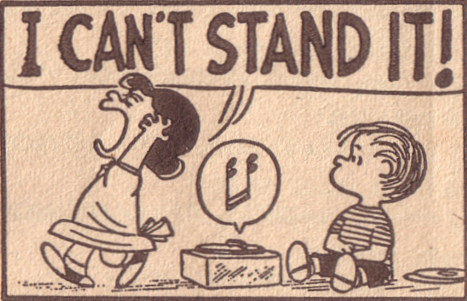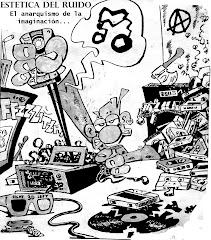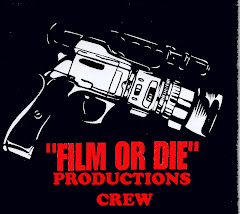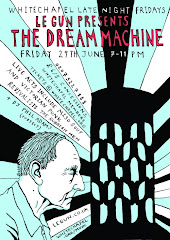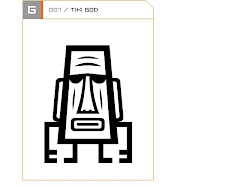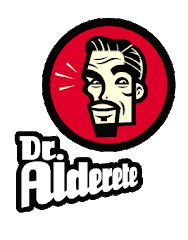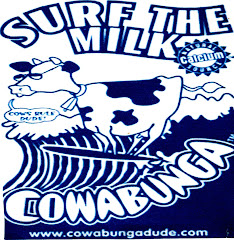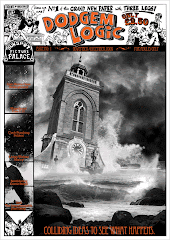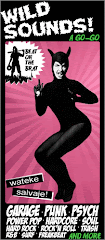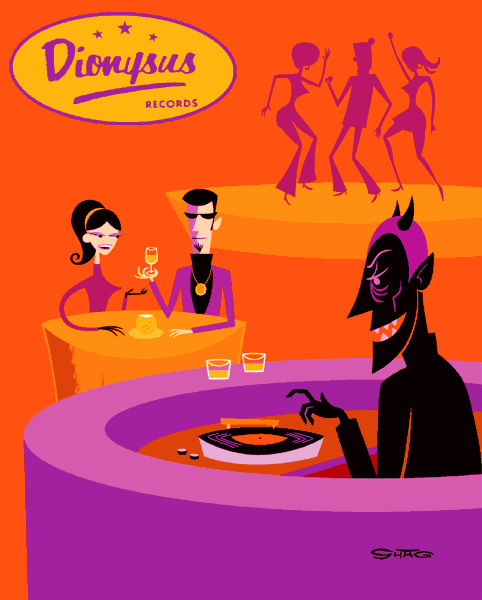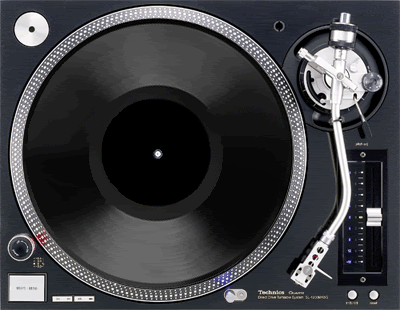Thursday, September 27, 2012
Wednesday, September 26, 2012
Iconoclasta #25...filosofando el tedio...(cineastas haciendo música)
john Coltrane
“El mundo no es
otra cosa sino música hecha realidad“
Shopenhouer
In memoriam de “Trane“
Track/Artist/LP/Label
“Scud Attack“/Painkiller/Guts of a Virgin/Tzadik
“Bemsha Seing“/John Coltrane /Avant Garde/Atlantic
“Lonesome
Blues“/Woody Allen New Orleans jazz band/Wild Man Blues/RCA
“Ghost of Love“/David Lynch/Inland Empire Soundtrack/Absurda
“Sally Go Around the Roses“/The Del-Byzanteens/Lies to live
by/Expanded Music
“Santastic Mix“/Sdp/Major Force West: The Original Art Form/Mo´
Wax
“Mad Blunted Jazz“/Dj Cam/Mad Blunted Jazz/Shadow records
“Theme“/Dj Klock/Rainbow Ep/Clockwise recordings
“Teenage Kicks“( Undertones cover) “/Nouvelle Vague/Nouvelle
Vague 3/Peacefrog
“Too Drunk to Fuck“ (Dead Kennedys cover)/Nouvelle
Vague/Nouvelle Vague 3/Peacefrog
“Last Nite“/The
Detroit Cobras (Strokes cover)/Stop Me If You Think You've Heard This One
Before/Rough Trade
“Army of Me“ (Bjork cover)/Helmet/MOM: Music for Our Mother
Ocean/Interscope records
The Brief Histories & Modern Journey of a Vinyl Record
by Sean Cooper
via (http://www.brooklynrail.org)
The modern vinyl record began its life at a 1920 funeral, with King George V and the procession walking down Whitehall, while two producers, waiting for their arrival, sat in a truck parked outside Westminster Abbey in London. They were there to cut a record of the burial ceremony of the Unknown Warrior. English and Indian princes joined admirals, lords, and the mourning masses to remember those who had died in the First World War. The Unknown Warrior acted as the symbolic recipient of their sorrow. Inside the wood-paneled truck, a small heating stove kept the producers warm against a late autumn chill. Beside the stove, a recording device rested atop a narrow oven. Heated wax being easier to cut, the oven warmed the producers’ blank recording discs while they, the producers, waited for their cue.
From four microphones placed around the abbey, telephone wires carried the sounds of the ceremony to the turntable-shaped recording device. A signaler from inside the church alerted the producers when to start and stop recording. Only two hymns emerged sonically intact from that session in the truck, but it was enough material for a commercial release. The Columbia Gramophone Company quickly had the producers’ discs copied and reproduced into a two-sided 12-inch disc available to the public for seven shillings and sixpence. More historically significant than anything else, the record sounds scratchy and rather poor.
It’s a cold Sunday last December, and I’m on my way to visit the producer Matt Boynton at his Williamsburg recording studio, Vacation Island Recording. A lonely city park and quiet businesses bring little traffic to his neighborhood in the winter, and it’s easy to miss his brick building when walking past, sprayed with various pieces of graffiti and without any sign or street number to identify what or who may be inside. Entering is a bit like seeing a good friend’s new apartment for the first time, where everything looks familiar but from somewhere else. Boynton’s 24-channel recording console, crushed velvet chairs, and dim lamp lighting remind me, a child of the ’80s, ofMTV behind-the-scene programming and glossy magazine photo spreads. The studio itself is divided into three adjacent rooms, with a small piano room sandwiched between the larger control room, where Boynton operates the console, and the larger tracking room, where the musicians perform. From the tracking room, musicians can look through a five-foot-wide Plexiglas window, over the white piano, and through a second window of Plexiglas to see Boynton at the console. From the console, Boynton and I see Zach Cale in the tracking room, recording one last song for his new album. Boynton had described Cale to me as a guitar-playing singer-songwriter who does “some folky stuff, but not hokey folk stuff. He does a lot of drone, like John Fahey.”
Cale is small-framed with a boyish face and black hair that pokes out from under a maroon winter hat. Surrounding him and his acoustic guitar are four microphones, each clipped to mic poles. Cranked at sharp angles, the poles look like the black arms of a giant spider about to haul Cale away. Cale’s proximity to the microphones is of great concern to Boynton, who fidgets with knobs on the console while Cale strums a few bars. Unsatisfied, Boynton pops out of his red wheelie chair to make more adjustments. In an attempt to quit smoking, Boynton has started to chew nicotine gum, and when he comes back into the control room, he is simultaneously chewing and snapping his fingers; not nervously, but rather to keep his mental balance. To no one in particular, he says, “I don’t know how we’re going to get rid of this buzz.”
Before microphones and the development of the electrical recording technology first used in the truck outside the abbey, producers like Boynton had to make records acoustically, utilizing the acoustical power of a performance to drive the needle that cut the sound waves into a cylinder or disc of wax. A recording of a large orchestra inevitably tested a performer’s preferences for personal space, as producers, earnestly intent on channeling the maximum force of the orchestra’s acoustical output into the phonograph’s wide-mouthed horn, packed the performers almost comically close together around, and even above, the phonograph machine. On raised platforms the width of a chair and a music stand, French horn and tuba players had to carefully turn their backs and their instruments to the phonograph, while they, the players, took their cues from the producer in a mirror. Excessive movements could lead to a performer’s early retirement.
With me in the control room is Ryan Johnson, a longtime friend of Cale’s who, along with Cale and Cale’s girlfriend, Alfra Martini, helps run the record label All Hands Electric. In August of last year, Johnson joined Cale in Boynton’s studio to play the drums on “Hold Fast,” the song that Cale is here to record again but in a higher key. Instead of redoing it live, with Cale and Johnson together, Boynton will attempt to overdub Cale’s new vocals and guitar onto Johnson’s drum track from August. So far, it’s taken an hour for Boynton and Cale to arrange the microphones and tracking room amplifiers for the re-recording. “It’s sort of like being on a long plane ride,” says Johnson. “A whole day goes by, and then you go outside and it’s dark.”
Back around 1902, studio sessions progressed at a significantly swifter pace. A young and rising Italian singer was known to record 40 songs in the morning before a break for a long lunch. In the afternoon, he’d sing another 40 songs into the horn before calling it a day. After staring at the patchbay beside the console, Boynton starts plugging in and unplugging yellow and purple wires. Thirty-three years old and round-faced, Boynton has the habit of tucking his long black hair behind both ears during moments of deep concentration. Seated back at the console, he records Cale for a few more unsuccessful takes. It’s decided that Johnson and Cale will redo the song from scratch.
The three of them will record well into the night. When the rough draft of the album is complete, and all songs have been satisfactorily recorded, Boynton will cease working as the album’s producer and become its mixing engineer. At a rate of about a song a day, from noon until 10, Boynton will listen to the same brief moment of music over and over again—hours spent attuned to fractions of minutes—tweaking the sonic characteristics of the vocals, guitar, and drums so that each part mixes well with the others. In this way, Boynton acts as something like a physical trainer for an accident-prone sports team—rarely seen by the public but crucial to the team’s performance.
Shortly after mixing, Boynton will send high-resolution files to Cale, which Cale will convert into MP3s and then use to promote the record. If he manages to attract a larger music label, they will likely take over the album’s production, release, and distribution. If Cale decides to release the album through All Hands Electric, he will be responsible for overseeing the album’s production, and will look to hire an engineer like Paul Gold, who mastered and cut to vinyl Cale’s previous albums.
Before the iPod and the torrent file left their mark on the recording industry, Americans were more than willing to pay for their music. In 1957, for example, they bought 52,000,000 vinyl records—a figure which seems impossible today. By the 1980s, major labels had left the vinyl record for dead and shifted their attention to the explosively popular compact disc. From then until the mid-’00s, vinyl releases were much smaller and mostly relegated to independent and boutique labels. Around 2008, to the surprise of many, vinyl sales once again showed strong growth, with a 90-percent increase over the previous year. In each year thereafter, sales continued to climb, with more than 3.5 million records sold in 2011—a far cry from the sales numbers of the late ’50s—but enough to support a thriving niche marketplace. When the mastering and vinyl cutting engineer Josh Bonati reads sales reports, as he told me one day, he triples the number, since many of the records cut for today’s bands and small labels end up on concert merchandise tables and low-traffic websites, without any ties to the retail monitoring agencies that calculate annual record sales.
Two miles north of Matt Boynton’s studio, a few blocks from the nascent Transmitter Park on Greenpoint Avenue, Paul Gold operates Salt Mastering in the old pencil factory building. Gold first worked as an engineer in a Manhattan studio, until 2006 when he went into business for himself. “Well,” says Gold, “the first name I wanted was Master Supply, but a plumbing place already had that. Then the next name I came up with was Intercontinental Ballistic Mastering but I couldn’t get ICBM dot net, dot com, dot anything, and then I thought of the Salt Two Treaty.” Gold is stout and clean-shaven, save for a triangle of black hair below his bottom lip. He has curly hair that sprawls around his head, and tall black eyebrows, of which the left is the most active, often arching to punctuate his speech. “So I decided to call it Salt Mastering.”
The mastering engineer profession first took root in the ’50s and ’60s, when record labels consistently invested in someone outside the creative recording process to give their records a fresh, unbiased listen and a final, authoritative edit. Precision and accuracy are not so much a mastering engineer’s hopeful ambition as they are the requirements for a mastering engineer’s steady income. Given their professional meticulousness, it’s surprising then how often many of them lean upon imprecise metaphors to describe what they do. Heights (bringing the snare drum higher or lower), weights (a heavier or lighter sound), and touch (satisfying the client who wants a softer sound): These are some of the more popular categories of metaphor they use. In the main, a mastering engineer’s job consists of being obsessively concerned with a record’s every sound relationship. On Cale’s album, if hired again, Gold will balance the guitar level to the vocal level, the kick drum to the hi-hat, the left channel to the right. Once done, Gold will provide Cale with his album in its final digital form—files ready for sale online and in iTunes. Around the country today there are less than 50 commercial vinyl cutters available for hire, many of whom work under their own name and roof. In Brooklyn, there are three with no studio affiliation: Paul Gold, Greg Vaughn, and Josh Bonati. Like Gold, Bonati was once a Manhattan-based mastering engineer who began to cut vinyl after opening up his own business in Brooklyn. Unlike Gold, Bonati is tall and athletically built, with short hair and a day’s stubble on his face. An Illinois native, generous with conversation, Bonati keeps a tidy studio in a commercial building inDUMBO, near the end of Bridge Street, where the aura of change and a new kind of industry loom about.
In one way, cutting a record is simple. The vinyl cutter just feeds the mastered files into a computer which is hooked up to a machine called a vinyl cutting lathe. The lathe then cuts the record. (Incidentally, vinyl cutting is a misnomer; what is actually being cut is an aluminum disc coated on both sides with a spongy black lacquer material. More precisely, the lacquer is cut—and ideally the aluminum remains unscathed. The discs cost about $30 each and are easily susceptible to inadvertent damage. On different occasions, Bonati has ruined lacquers with an accidental sneeze, a dangling jacket zipper, and a dropped piece of paper. As an ingredient, vinyl doesn’t appear in the record production recipe until much later. Almost everyone, however, including those who make a living doing it, refers to it as cutting vinyl.) Unfortunately for an aspiring vinyl cutter, lathes haven’t been manufactured in nearly 30 years. The Berlin-based Neumann Company was the last to do so, ceasing lathe production in the 1980s when it became too difficult to turn a profit on their last and most advanced offering, the $250,000 VMS-80 system. Widely considered the best lathes ever made, and the most popular brand of lathes in commercial use by American vinyl cutters, Neumanns can occasionally be found today on the used machine market, when they can be found at all. Weighing close to a thousand pounds and resembling a bulky, blinking set prop from Stanley Kubrick’s 2001: A Space Odyssey, most lathes ended up liquidated, discarded, or landfill-bound after the music industry embraced the compact disc.
In contrast to fledgling producers or mastering engineers, aspiring vinyl cutters must teach themselves. A vinyl cutter might take on the rare intern, but it’s unlikely the intern will get to cut a record—too great is the risk that the intern will damage a part of the lathe that is expensive, or impossible, to replace. After Josh Bonati bought his used Neumann for $30,000, he designed a lathe training program for himself that included a practice regimen of 100 successfully cut lacquers, some being copies of records from his own collection. He ended up cutting 200 lacquers to produce 100 of substantial quality.
When I visited Bonati’s studio, he showed me how he cuts a record. The cutting begins with the lacquer disc set upon a steel platter spinning a precise 33 1/3 revolutions per minute. In motion, the black lacquer material transforms into a wobbling puddle of black ink, a mirage caused by the reflection of the room’s light. The lathe’s cutterhead then slowly lowers to the lacquer’s surface. Affixed to the underside of the cutterhead, a tiny, triangle-shaped industrial ruby serves as the cutterhead’s only point of contact with the lacquer. (Previously, Bonati had tested the cutterhead’s ruby at various temperatures, as the ruby, heated via an electrical current, creates a smoother cut at different degrees of heat.) Properly warmed, the ruby begins to shear away from the surface of the lacquer a thin ribbon, called chip. Nearly naked to the human eye, the cutterhead sways slightly like an old man at a wedding, while the ruby modulates left and right and up and down, inscribing a microscopic sound wave into the freshly sheared walls of the groove. Never lifting out of the lacquer material, the ruby creates a complete spiral from the outer edge of the disc to the innermost revolution; a perfectly circular loop called a lock groove. All the while, a tiny vacuum tube sucks away the chip from behind the ruby, like a compulsive maid. Beside the ruby, a second tube slowly leaks a stream of helium, gathering together into a gaseous cloud about the size of an engorged grape. The helium reduces the temperature created by the heated stone and the friction of the stone’s contact with the flammable lacquer.
Once the lock groove has been cut, Bonati lifts the disc off the platter and fastens it carefully inside a lacquer shipping box. A friend picks up the accumulated boxes and drops them off at MasterCraft, a factory in Elizabeth, New Jersey that chemically reproduces the lacquer into its metallic counterpart.
When I asked Cale about marketing his music to more fans, he talked about the popular music-review website Pitchfork and the online music community. “I had a writer at Pitchfork that really liked my record,” said Cale. “But he couldn’t review it because the editor didn’t want to agree to it for some reason. They’re a tastemaker, and they have to uphold this ideal of who they are, but I think they’re kind of hypocritical. They always act like they find the newest stuff, when they’re really just waiting until something is tearing up the music blogs, and then they put their stamp of approval on it. But not all music travels well on blogs. The blogosphere has created a platform that wants an immediate pop sound. You’re on the Internet, clicking on things, and your attention span is short. You want to hear things quick. If you’re doing jazz, or doing more patient music, or more of what I do, which is folk based, then you’re not getting out there. The blogs only give you one kind of music.”
There has long been a tension between what most of the public tends to listen to and what musicians and critics wished the public listened to more. In 1909, the critic and composer Max Chop surveyed the music scene and found himself dissatisfied with the trivial offerings of contemporary music:
The symphony orchestra is only rarely in evidence; yet it is, after all, the only instrumental body to be considered for really valuable literature and high artistic quality … There are marches, dances, medleys, abbreviated overtures, and little salon pieces of rather questionable merit—all of it rather mediocre entertainment music. Next to this we have a growing repertoire of “hits.” I will not deny the hit’s right to existence. As a child of the times, begotten of the shallow and the trivial, toward which a wide segment of the popular taste is oriented, it has a right to live. But it certainly need not spread itself as widely as it does.
Despite the laments of Chop and those who agreed with him, marches, polkas, and waltzes remained in heavy rotation on the coin-operated phonograph machines that dotted drugstores and saloons around the country. At less than $200 a pop, a nickel-a-play phonograph quickly earned back its owner’s investment and then some, with well-played machines taking in up to $50 a week. In France, a more involved jukebox-style business emerged, at the posh Salon du Phonogrape, where top-hatted businessmen sat in fine mahogany chairs, placed listening tubes in their ears, and after dropping in a token, selected the latest tunes on a dialing device. In the basement, a fleet-footed worker read the dialed request, quickly scooped the appropriate recording from a nearby shelf, and cued it up on the customer’s corresponding phonograph. In less than 10 seconds, the song would travel from the subterranean phonograph, along the ear tubes, and upstairs to the waiting customer.
When a master lacquer leaves Brooklyn and arrives at MasterCraft in New Jersey, Desmond Naraine and his six employees take the album through a carefully choreographed chemical process of duplicating the spongy black lacquer into a shiny nickel disc called a stamper. On it, the lacquer’s suppressed pattern of sheared sound wave grooves has essentially been reversed, with the grooves extruding from its flat metal surface. The top of the metal stamper, cool to the touch from the chemical baths, feels like closely spaced rings of tiny braille, the minuscule hills and valleys of the physical sound waves. From Naraine, albums often return to Brooklyn for pressing, now tougher and more durable in their pure nickel form. Every weekday, a UPS truck visits 42nd Street, a noisy block populated with cars, parts, and whistling mechanics in Sunset Park. The daily delivery includes a big stack of MasterCraft packages for the two-floor Brooklynphono pressing plant. A tall, redheaded, red-bearded young man named Paul Sweedlund manages the business operations while the owner, Thomas Bernich, works the pressing machines on the clangorous factory floor. Sweedlund showed me around one day, and in shouts directed toward my turned head explained how a record is pressed. A pair of stampers, one side for each record, are set into the hissing mouth of a large press, roughly similar in dimension to a small car flipped onto its rear bumper. The bottom of the press’s jaw, holding one stamper, remains fixed, while the roof of its mouth drops closed. Above and behind the mouth, in a plastic tube, round pellets of vinyl whirl around like lottery balls. They then drop into a metal arm containing a screw. Ground up and heated, the pellets are mushed together into a sticky vinyl biscuit that plops out the other side. Twitchy robot arms slap labels to both sides of the biscuit before it’s dropped onto the center of the bottom stamper. The roof of the mouth slowly closes down and the vinyl is squeezed flat between the stampers. The vinyl disc then quietly sneaks out a narrow opening, dressed in labels and stamped with the grooves of the album.
Internet news outlets have recently been circulating rumors about major record labels preparing to discontinue the production of compact discs as their primary delivery method for new music. According to the reports, the bulk of their releases will instead be sold through digital channels. It would seem that the vinyl record has finally matured into adulthood, no longer susceptible to the volatile market conditions that afflict the still-adolescent compact disc. Sometime this year, Zachary Cale will release his new album, digitally as well as on vinyl. Despite Cale’s skepticisms, fans will continue to find him and his music, and buy his records, if for no other reason than the powerful allure of the quality musical experience, an experience that has had various impacts for various people. Upon his initial encounter with a phonograph, the popular German composer Hans von Bülow decided to record himself performing a Chopin mazurka on the piano. When he picked up a pair of ear tubes and heard recorded music for the first time, he fainted.
ABOUT THE AUTHOR
SEAN COOPER's writing is forthcoming, ideally, from multiple publications. He lives in Brooklyn and occasionally uses the Twitter account @SeanPatrickCoop.
Wednesday, September 19, 2012
Iconoclasta #24...provocando y retando al status quo...
 |
| Kid Koala |
“La única cosa que puede
resolver muchos de nuestros problemas es el baile“
James Brown
Track/Artist/LP/Label
“You Got To Have A Mother For Me“/James
Brown/Motherlode/polydor
“Chupacabra“/Chicago Afrobeat Project/A Move To Silent
Unrest/Chicago Afrobeat Project
“Samba de Uma Nota Só“/Sao Paulo Ska Jazz/Sao Paulo Ska
Jazz/Tratore Music Brasil
“Shea's Groove“/Dj Logic/ Project Logic/Rope a Dope
“Bit Blues“/Kid Koala/12 Bit Blues/Ninja Tune
“I´m a Doggy “/Gratest hits/The Legendary Marvin
Pontiac/Strange and Beautiful
“Bread and Roses“/Marc Ribot&Ceramic Dog/Ceramic
Dog/(free to conmemorate one year of Occupy Wall Street)
“Jack's In The House“/Jamie Saft &Cuong Vu/Ragged
Jack/Avant Japan
“I want a Little girl“/Robert Crumb & His Cheap Suit
Serenaders/Chasin Rainbows/Shanachie
“My Burr“/Minotaur Shock/Amateur Dramatics/4AD
“Taking kid to school“/DNA/DNA on DNA/No more
“Bad ass Youth“/The Pizzas/Bad as Youth 7“/Daggerman Records
“ I Want To Fuck All The Girls In My School“/Bazooka /I Want
To Fuck All The Girls In My School/Slovenly Recordings
Tuesday, September 18, 2012
Festival Poesía en Voz Alta 2012
Participantes
- Arreola + Carballo (México) con poesía extendida y video.
- Black Cracker (Estados Unidos) con performance art.
- Konrad Becker y Sela (Austria) con electropoesía.
- Jaap Blonk (Holanda) con poesía sonora y voz.
- Ricardo Castillo y Fernando Vigueras (México) con poesía y medios electrónicos.
- Ricardo Domeneck (Brasil-Alemania) con videoarte y poesía sonora.
- Eduard Escoffet (España) con poesía sonora.
- John Giorno (Estados Unidos) con electropoesía.
- Ramón Gutiérrez Septeto (México) con son jarocho.
- Koulsy Lamko (Chad) con poesía sonora.
- Hanne Lippard (Noruega) con “audiotipografía”.
- Mikeas Sánchez (México) con poemas en lengua zoque.
- Clemente Padín (Uruguay) con curso y conferencia magistral sobre poesía experimental, así como con un performance.
- Edwin Torres (Estados Unidos) con performance poetry.
- André Velter y Gaspar Claus (Francia) con poesía e improvisación sonora.
- Ganador de Slam Poetry convocado por la Alianza Francesa y Casa del Lago (México).
- Seis poetas mexicanos emergentes: Luigi Amara, Alejandro Albarrán, Rodrigo Flores,
Inti García Santamaría, Maricela Guerrero y Alejandro Tarrab, con experimentación sonora.
http://www.casadellago.unam.mx/
http://www.chopo.unam.mx/
Wednesday, September 12, 2012
Iconoclasta #23...solo para “Junkies“
Ken Vandermark
“En general, el jazz siempre ha sido como el tipo de hombre que no te
gustaría para tu hija"
Duke Ellington
Track/Artist/LP/Label
“St.Thomas“/Sonny Rollins/Saxophone Colossus/Prestige
“Money Down (For Rahsaan Roland Kirk)“/Vandermark 5/Airports for Light/Altavistic
“Bear No Hair“/Garage a Trois (M.Dillon,Charlie Hunter,Stanton Moore,Skeryk) /Outre Mer/Telarc
“Ain´ t that a groove“ /Hot Chocolate/Hot Chocolate/Soulb
“What do you want to do“/Hot Chocolate/Hot Chocolate/Soulb
“Soul Brother Testify“/Original Soul Senders/Soul Brother Testify / Sweet Potato Mash/Anla Records
“Again and Again“/Speedometer/Sounds from the soul underground/Freestyle Records
“Hot Winter day“/Prefuse 73/Vocal Studies + Uprock Narratives/Warp Records
“Ghostwritter“/RJD2/Dead Ringer/Definitive Jux
“It's Me Oh Lord“/ Slime & Reason (Retail)/Roots Manuva/Big Dada Records
“Rigor Mortis“/Willie Bobo/Vampisoul in search of cool/Vampi Soul
“Mambo in two parts“/Snowboy The Latin Section/Descarga Mambito/Vanilla OMP
“Soi el Ray“/Ray Lugo & The Boogaloo Destroyers/Mi Watusi/Freestyle records
Tuesday, September 11, 2012
Subscribe to:
Comments (Atom)














































